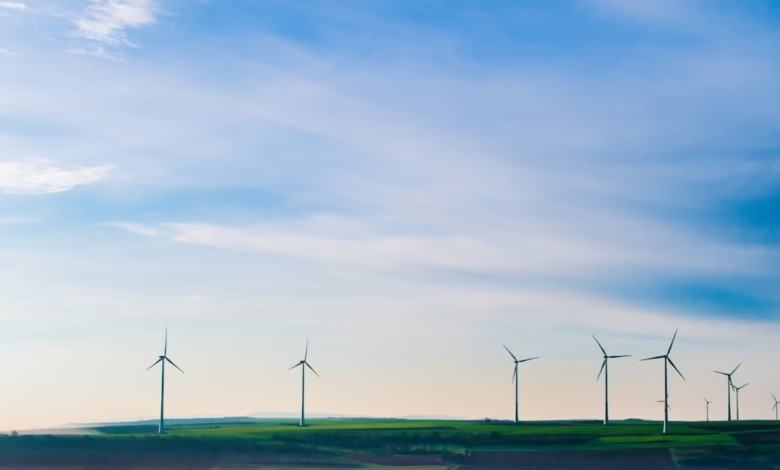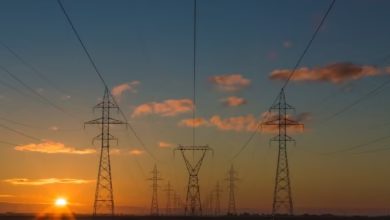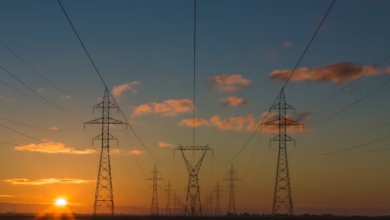Navigating the Future of Energy Trade: Insights into Global Energy Exports and Imports

The global trade of energy resources is a critical component of the modern economy, influencing everything from international relations to climate change initiatives. As nations strive for energy security and sustainability, the dynamics of energy exports and imports have become increasingly complex. This article delves into the multifaceted world of energy trade, examining the interplay between renewable energy and fossil fuels as they shape the future of energy markets. We will explore innovative energy solutions such as nuclear energy, energy storage, and smart grids that are driving the energy transition towards a more sustainable future. Furthermore, we will analyze the impact of energy policy and investment on global energy trends, highlighting the role of offshore energy, hydropower, and bioenergy in the quest for energy efficiency. Join us as we navigate the evolving landscape of energy innovations, from solar power and wind energy to carbon capture technologies and electric vehicles, and uncover how these elements are reshaping the global energy economy.
- 1. The Dynamics of Global Energy Trade: Understanding Energy Exports and Imports
- 2. Renewable Energy vs. Fossil Fuels: Shaping the Future of Energy Markets
- 3. Energy Innovations and Policy: Driving the Energy Transition Towards Sustainability
1. The Dynamics of Global Energy Trade: Understanding Energy Exports and Imports
The global trade of energy resources is a complex web influenced by various factors, including geopolitical dynamics, technological advancements, and evolving energy policies. Understanding energy exports and imports is essential to grasp the broader picture of energy markets and the ongoing energy transition.
Energy exports and imports encompass a range of resources, from fossil fuels such as oil and natural gas to renewable energy sources like solar power, wind energy, and hydropower. The dynamics of global energy trade are shifting as countries strive to enhance energy security and reduce reliance on traditional energy sources. For instance, nations rich in fossil fuels are increasingly exporting these resources to meet the growing demand in emerging economies.
In recent years, the rise of renewable energy has transformed energy markets. Countries are investing in energy innovations and new technologies, such as energy storage and smart grids, to integrate renewable sources into their energy systems. The global push for energy efficiency and carbon capture is also driving changes in energy policy, encouraging nations to adopt cleaner energy solutions.
The energy transition is not just about reducing fossil fuel consumption; it also involves enhancing the role of nuclear energy and exploring alternatives like hydrogen energy and bioenergy. The diversification of energy sources allows for more resilience against market fluctuations and geopolitical tensions, ultimately fostering energy security.
Moreover, energy transportation plays a pivotal role in global energy trade. Efficient infrastructure is necessary for the movement of energy resources across borders, whether it be through pipelines for fossil fuels or transmission lines for renewable energy. The integration of distributed energy systems is also gaining traction, as local energy generation can reduce dependence on imports and enhance energy independence.
As global energy trends continue to evolve, investments in energy R&D will be crucial for developing the technologies necessary for a sustainable energy future. The rise of electric vehicles is transforming demand patterns, prompting countries to adapt their energy strategies. Ultimately, understanding the dynamics of energy exports and imports is vital for navigating the complexities of global energy economics and addressing the challenges posed by climate change.
2. Renewable Energy vs. Fossil Fuels: Shaping the Future of Energy Markets
The global energy landscape is undergoing a significant transformation, largely driven by the increasing emphasis on renewable energy sources and a gradual shift away from fossil fuels. This transition is shaped by various factors, including climate change, energy security, and the need for sustainable energy policies. As countries aim to reduce greenhouse gas emissions, the focus is shifting towards green energy solutions, which include solar power, wind energy, hydropower, and bioenergy.
Renewable energy is becoming a cornerstone of energy markets, with investments in energy innovations and research and development (R&D) accelerating the deployment of advanced technologies. The rise of smart grids, energy storage systems, and distributed energy resources allows for greater efficiency in energy transportation and consumption. These innovations are essential in managing the intermittency associated with renewable sources like solar and wind, ensuring a stable energy supply.
On the other hand, fossil fuels continue to play a dominant role in global energy consumption. Despite the ongoing energy transition, fossil fuels such as coal, oil, and natural gas remain critical for energy exports and imports, particularly in regions where renewable infrastructure is still developing. However, the fossil fuel industry faces increasing pressure to adopt carbon capture technologies and improve energy efficiency to mitigate environmental impacts.
Nuclear energy is also part of the conversation, offering a low-carbon alternative that can complement renewable sources in providing stable thermal energy. As countries explore diverse energy portfolios, the integration of various energy types—including hydrogen energy and offshore energy—will be crucial in meeting future energy demands.
Energy economics plays a vital role in shaping these trends, as market dynamics influence energy investment decisions and policy development. The interplay between energy exports and imports reflects the necessity for energy security and the ability to adapt to global energy trends. As governments and private sectors prioritize sustainable practices, the ongoing evolution of the energy markets will pave the way for a more resilient and environmentally friendly energy future.
3. Energy Innovations and Policy: Driving the Energy Transition Towards Sustainability
The global energy landscape is undergoing a remarkable transformation, driven by innovative technologies and progressive energy policies that aim to facilitate the energy transition towards sustainability. As the world grapples with climate change, the shift from fossil fuels to renewable energy sources has become imperative. This transition is supported by a myriad of energy innovations that enhance energy efficiency and promote the use of green energy.
One of the most promising developments in this arena is the advancement of energy storage technologies. Efficient energy storage solutions are crucial for balancing supply and demand, particularly as we integrate more intermittent renewable sources like solar power and wind energy into energy markets. By enabling the storage of excess energy generated during peak production times, these innovations help ensure energy security and grid reliability.
Moreover, energy policy plays a pivotal role in steering investments towards sustainable energy projects. Governments worldwide are implementing policies that encourage the adoption of renewable energy, such as subsidies for electric vehicles and incentives for energy R&D. These policies not only foster the growth of solar power and wind energy but also support the development of emerging technologies like hydrogen energy and carbon capture, which are essential for reducing emissions from thermal energy and fossil fuel reliance.
Smart grids represent another significant innovation in the energy sector, allowing for more efficient energy transportation and distribution. By utilizing digital technology, smart grids facilitate real-time monitoring and management of energy flow, optimizing the use of both renewable and non-renewable resources. This creates opportunities for distributed energy systems, where local energy generation and consumption can take place, further enhancing energy efficiency.
The rise of offshore energy projects, particularly in wind and hydropower, illustrates the increasing diversification of energy resources. These initiatives not only contribute to energy exports but also play a critical role in meeting domestic energy demands while reducing reliance on fossil fuels.
In conclusion, the intersection of energy innovations and supportive energy policies is vital for driving the energy transition towards a sustainable future. As global energy trends continue to evolve, the emphasis on renewable energy, energy efficiency, and advanced technologies will shape the future of energy economics and secure a cleaner, more resilient energy landscape for generations to come.
References:
1. International Energy Agency. (2023). World Energy Outlook 2023. Retrieved from https://www.iea.org/reports/world-energy-outlook-2023
2. U.S. Department of Energy. (2023). Energy Storage Grand Challenge. Retrieved from https://www.energy.gov/estoragegrandchallenge
3. World Bank. (2023). Renewable Energy and Energy Efficiency. Retrieved from https://www.worldbank.org/en/topic/renewableenergy/overview
4. National Renewable Energy Laboratory. (2023). 2023 Renewable Energy Data Book. Retrieved from https://www.nrel.gov/docs/fy23osti/81457.pdf
In conclusion, the global trade of energy resources is undergoing a significant transformation influenced by various factors, including the ongoing energy transition towards sustainable practices. As countries navigate the complexities of energy exports and imports, understanding the dynamics of global energy markets becomes crucial. The competition between renewable energy sources, such as solar power, wind energy, and hydropower, against traditional fossil fuels and nuclear energy is reshaping energy economics and policies worldwide.
Innovations in energy storage, smart grids, and carbon capture technologies are pivotal in enhancing energy efficiency and security, while investments in offshore energy and distributed energy systems are expanding the potential of green energy. As nations work to meet climate change goals, the integration of electric vehicles and hydrogen energy into the energy landscape signifies a shift towards more sustainable energy transportation solutions.
Ultimately, the future of energy trade will be characterized by increased collaboration, investment in energy R&D, and the development of comprehensive energy policies that prioritize not only economic growth but also environmental stewardship. By embracing these global energy trends, we can pave the way for a resilient and sustainable energy future that benefits all.
References:
[Insert relevant sources here]




